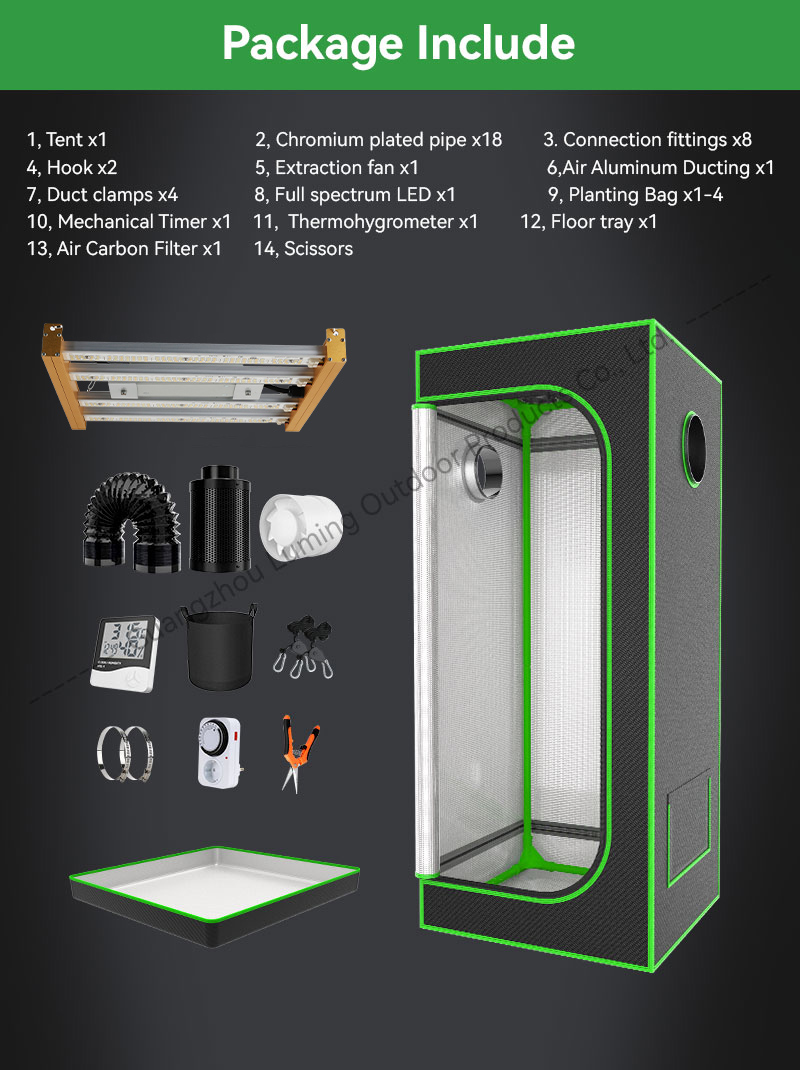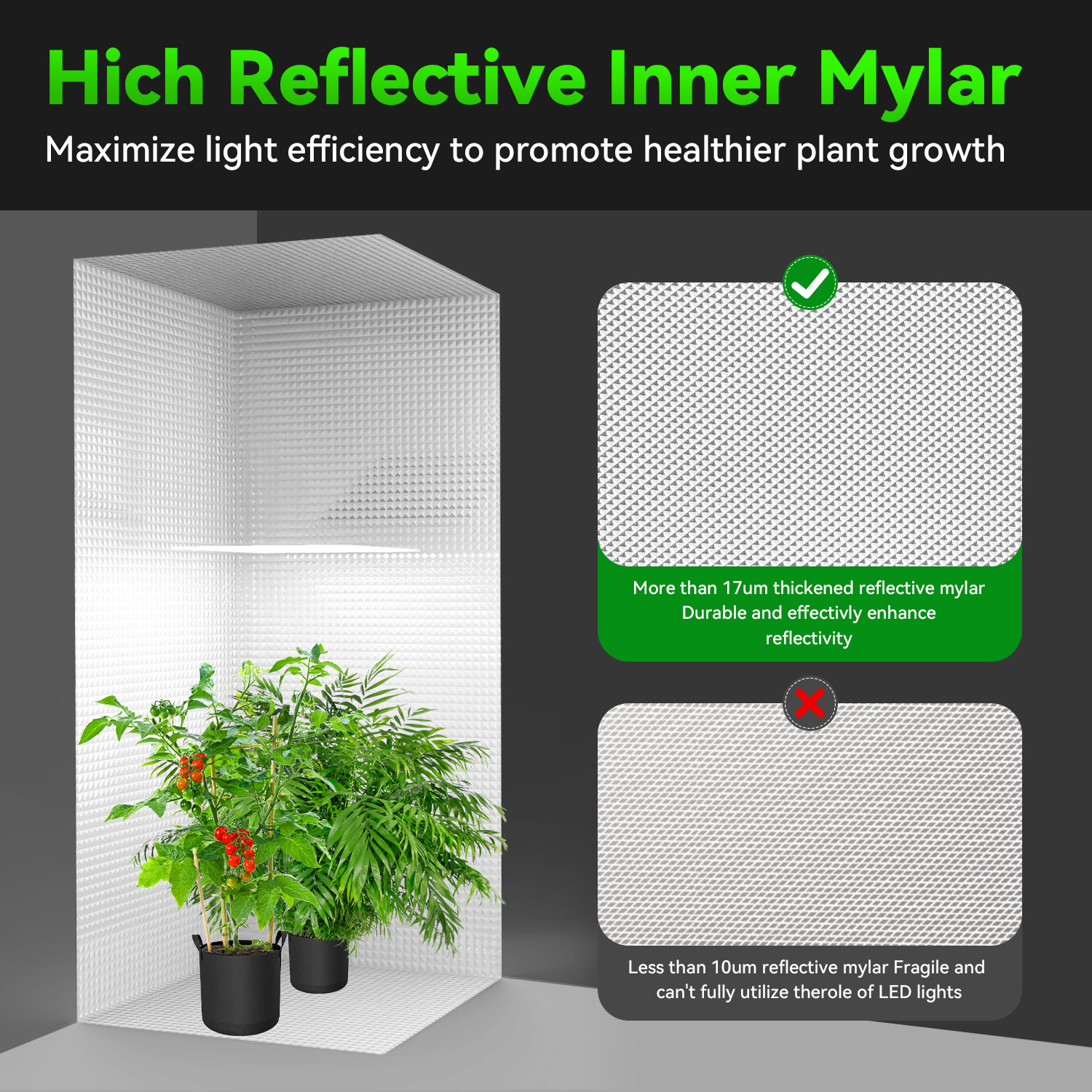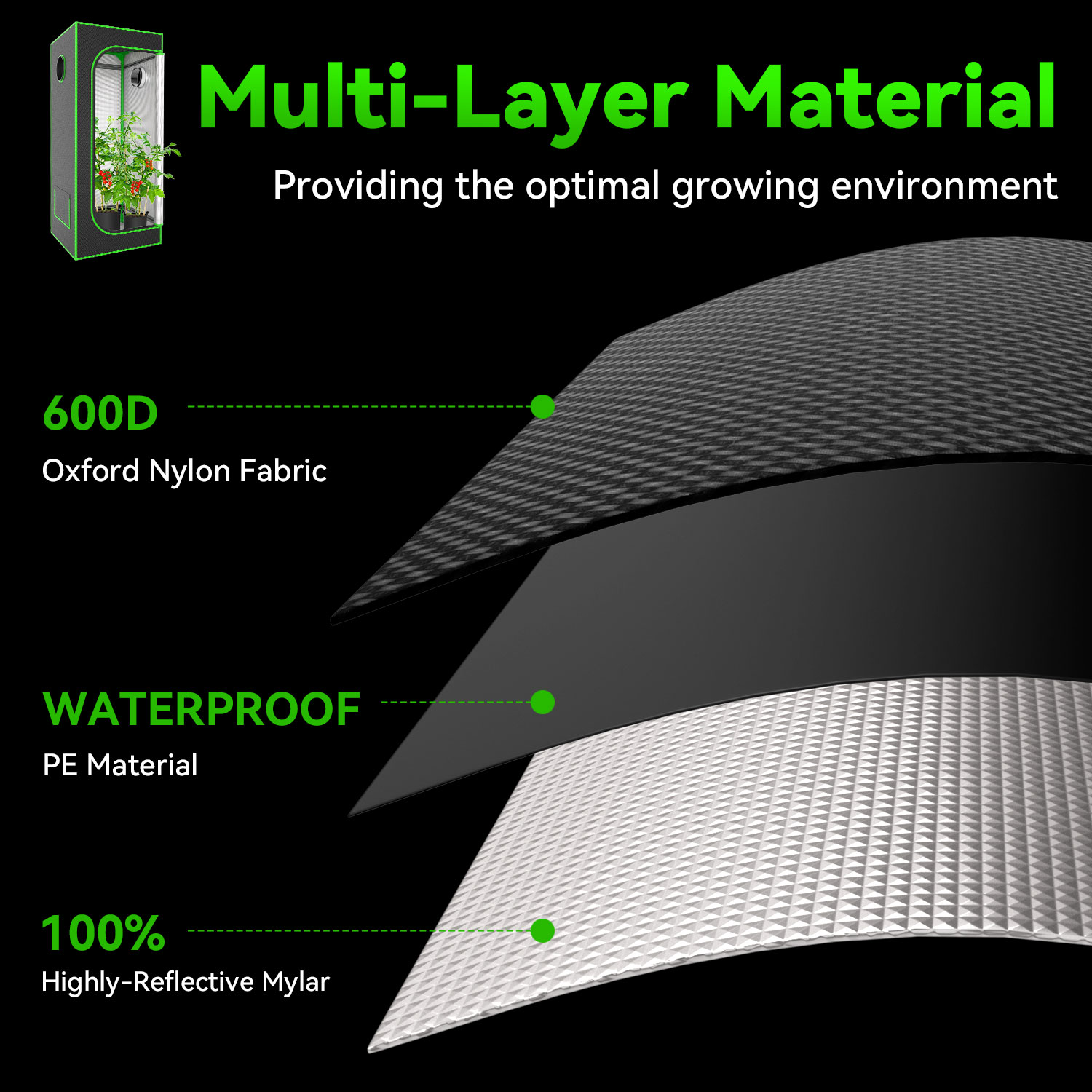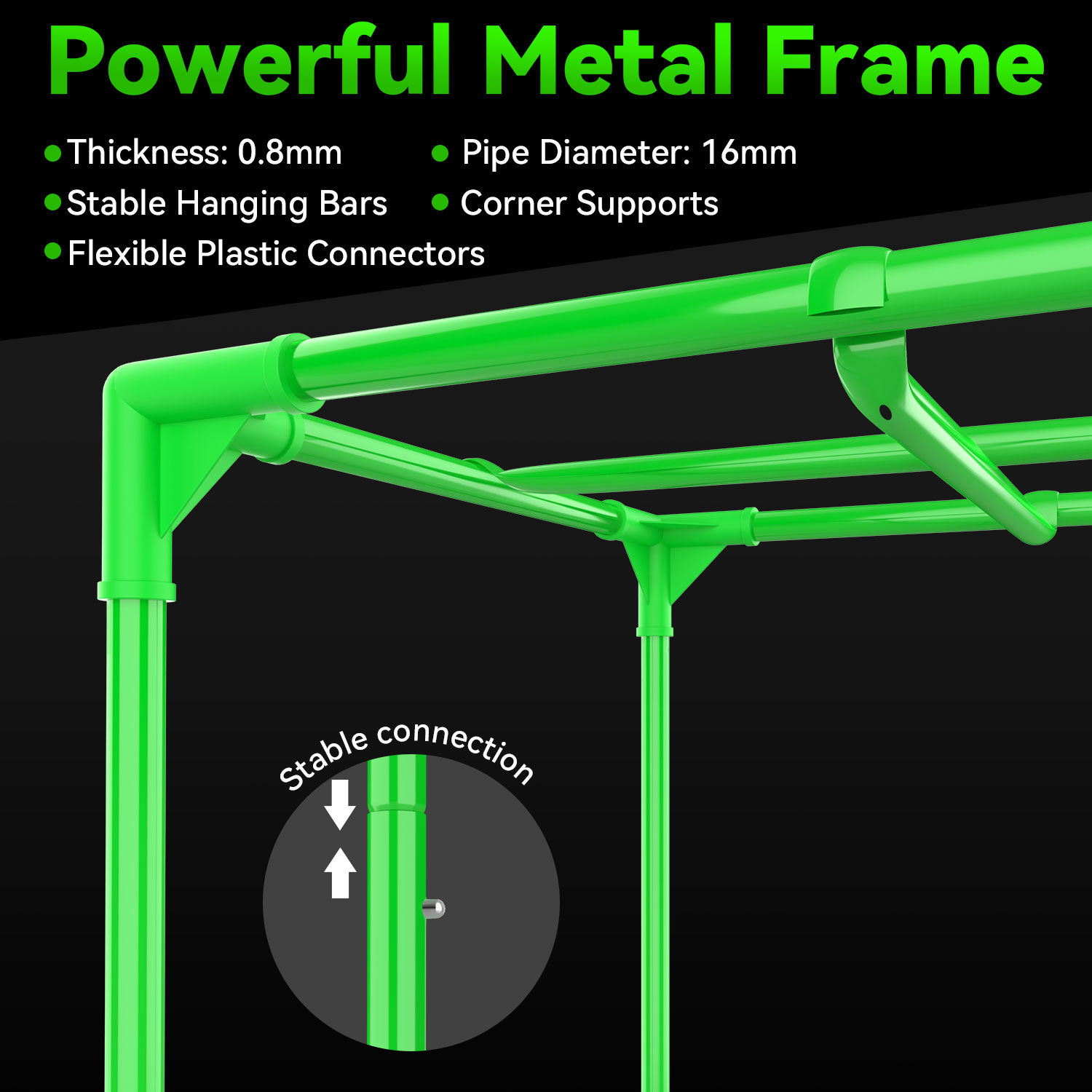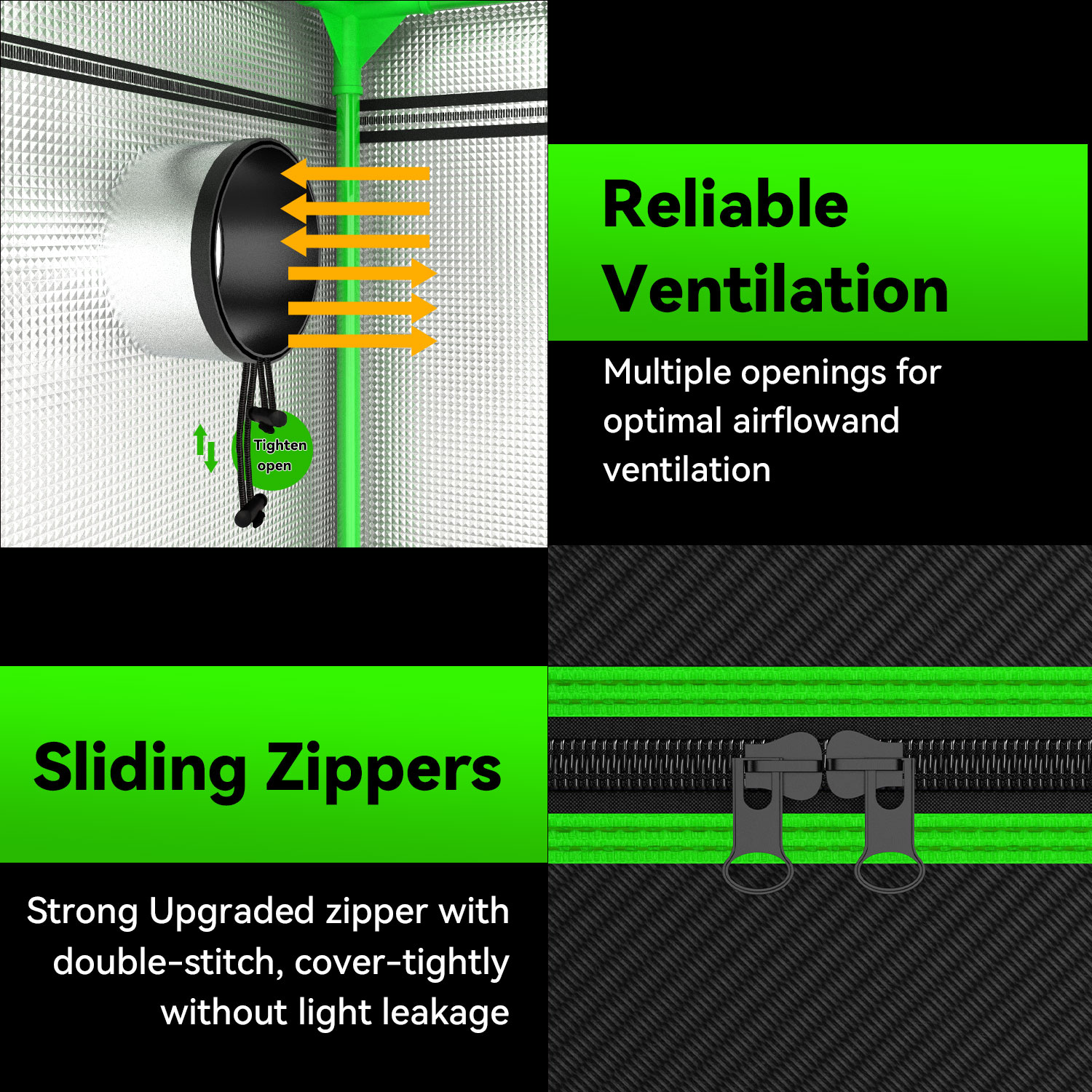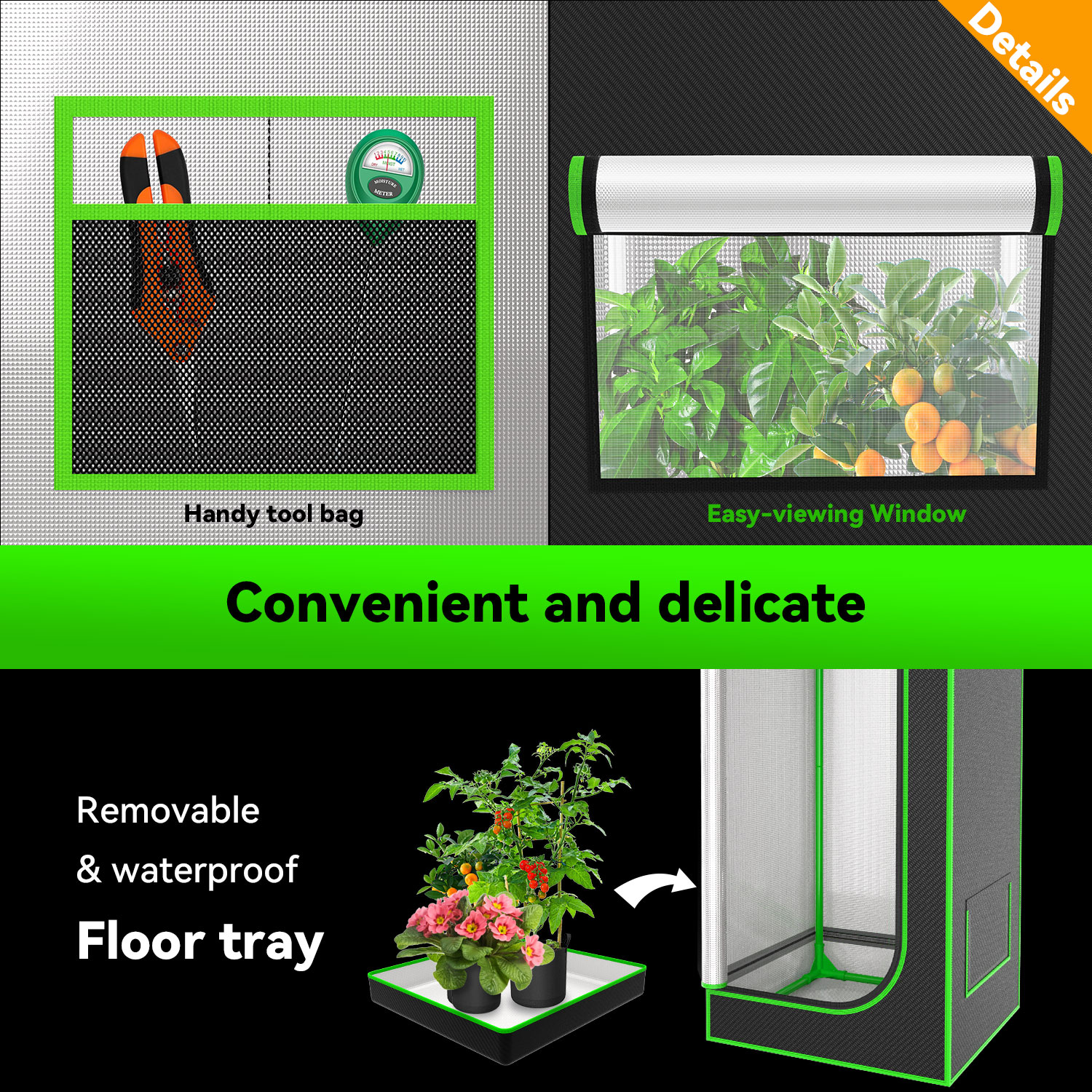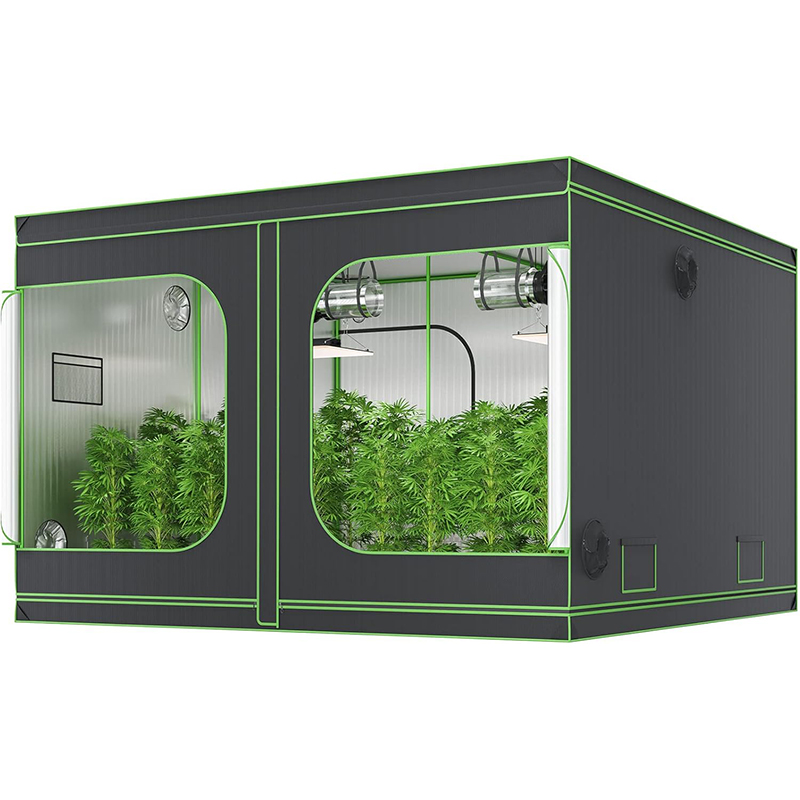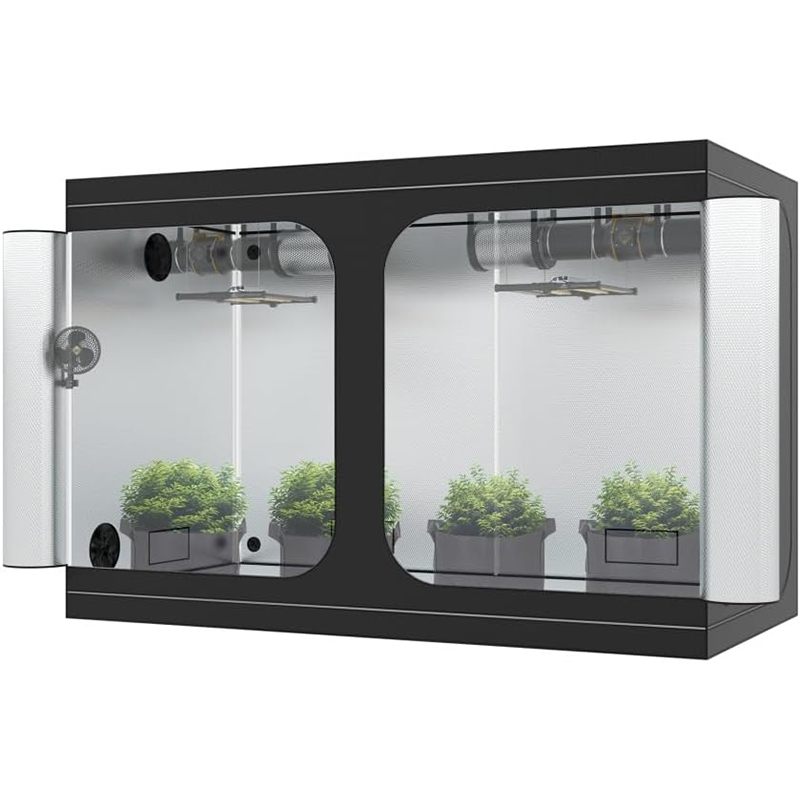Grow tents are specialized, enclosed structures designed for indoor gardening and plant cultivation.
They offer a controlled environment that allows growers to optimize conditions for plant growth. Here's a
detailed introduction to the functions and features of grow tents:
Light Conditions: Grow tents utilize high-powered grow lights to mimic natural sunlightwith a silver or Mylar inner lining that ensures maximum light reflectivity to the plants
. This design ensures that all parts of the plant receive light, unlike in natural environments where lower
parts may be in the shadows. The light-proof feature of grow tents also minimizes light leakage, allowing
growers to simulate a 24-hour light cycle necessary for plant growth
Temperature Control: The enclosed structure of a grow tent provides insulative properties to retain heat
Growers can directly regulate the temperature according to the plants' needs, unlike external temperature
changes that are unpredictable. The ventilation system within the grow tent manages temperature and air
circulation,creating a stable environment for efficient plant growth regardless of external temperatures.
Humidity Management: Humidity levels in a grow tent are determined by light and temperature conditions and directly impact a plant’s transpiration rate
. High humidity can result in molding and rotting, which can ruin the yield
. Grow tents allow for the monitoring and control of lighting and temperature for balanced humidity, ensuring plant health
.
Environmental Control: Grow tents give complete control over the plants’ growing environment
. Using lights, humidifiers, and different equipment, growers can regulate and maintain the light, water,
humidity, and temperature that plants receive
This control eliminates concerns about rain or excessive heat affecting plant growth.
Energy Efficiency: Grow tents are built to maximize energy efficiency. The Mylar interior walls reflect and
amplify light without requiring excessive energy from the grow lamp
. This helps speed up photosynthesis for the plants
Cost Savings: The energy efficiency of a grow tent means cost savings as well. Grow tents are less
expensive to set up than a large growing environment in a whole room
. They also reduce the risk of losing crops due to pests, flooding, and weather changes, saving money in t
he long run
Odor Control: Grow tents prevent unwanted odors from seeping outside, which is beneficial for growers
who plan to use chemicals or fertilizers for their indoor garden
. They keep allergens and scents contained, preventing them from affecting indoor air quality
Portability and Versatility: Grow tents are made from fabric, making them more versatile and easily
transportable compared to grow boxes
. They can be folded and moved if necessary, which is handy for sudden relocations or dismantling
between crops
Security and Low Maintenance: Grow tents are secure and low maintenance, allowing for complete
automation. This means you can set up timers for lights, feeding, and watering easily, and you can leave
a grow tent alone safely for days without any worry
Reflective Interior: High-quality grow tents utilize durable, double or triple-layered canvas to ensure light
does not penetrate the tent. The interior tent walls and ceiling are equipped with reflective Mylar or plastic
lining, which maximizes light efficiency and distribution when specialized grow lights are used inside the
tent
Ventilation and Ducting Options: Grow tents come with intelligently designed ports for ventilation, exhaust,
and cords. Ventilation ports help vent out hot air, while exhaust ports are for more heavy-duty ventilation
. Cord ports facilitate the connection of growing gear without the need for extension cords
Protection from Pests and External Factors: Grow tents protect plants from pests and external factors,
offering a controlled environment that is free from the unpredictability of outdoor conditions
